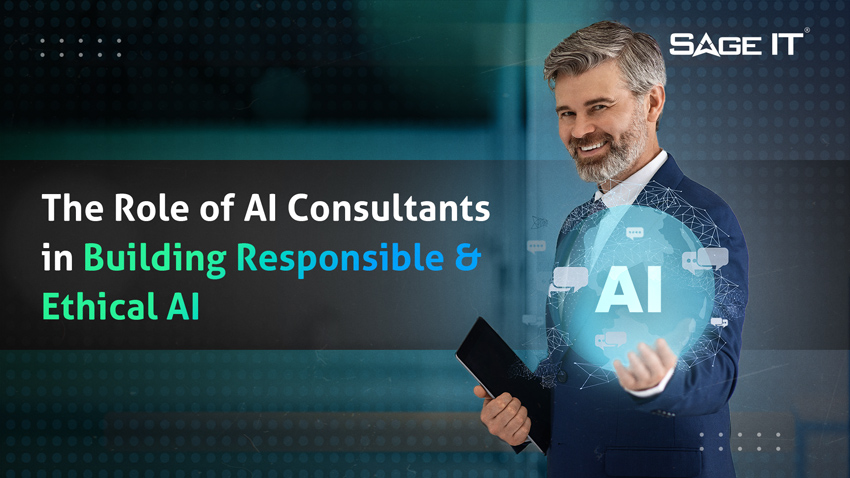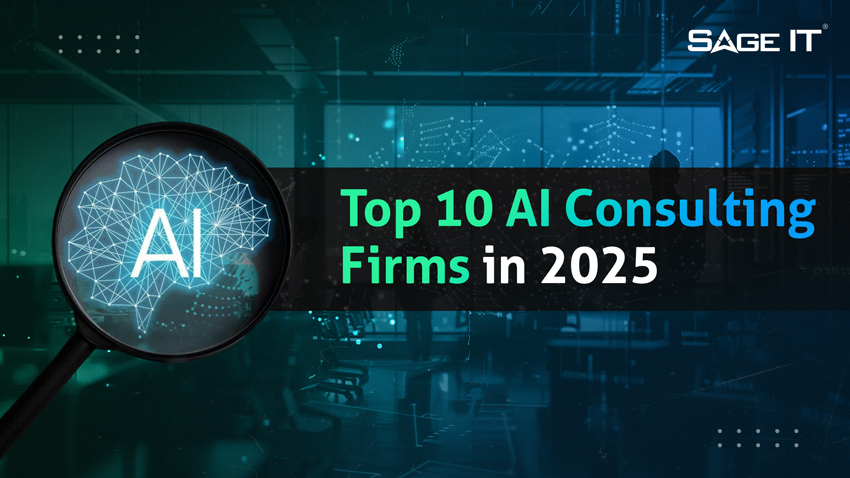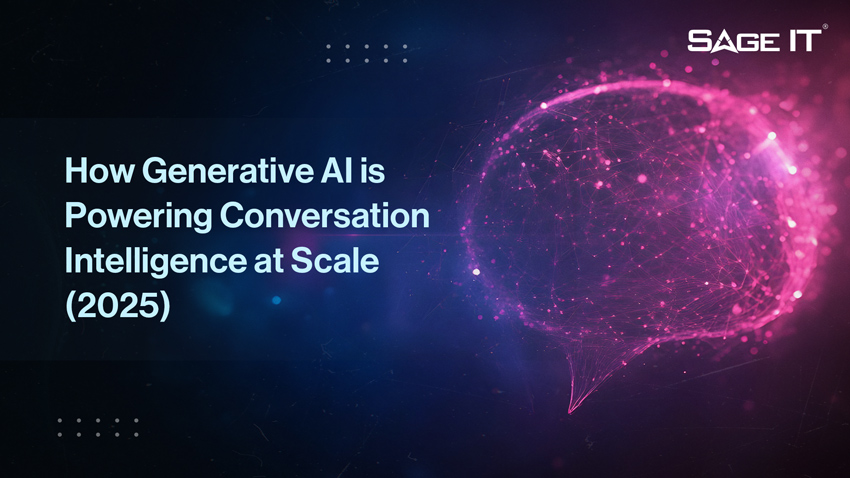Are you looking to incorporate Artificial Intelligence in your business but are confused about which one to choose – Generative AI or Machine Learning? In this blog, we will break down both concepts and compare them for a better understanding. We will explore the working mechanism, applications, and use cases of Generative AI. Whereas with Machine Learning, we’ll classify its types and provide real-life examples to further explain the concept. We’ll then compare both technologies and analyze their interplay in different industries. Moreover, we’ll also discuss ethical aspects and challenges related to Generative AI and Machine Learning. Lastly, we’ll take a look at the future potential of both technologies and help you make an informed decision on which one to choose for your business needs.
Understanding Generative AI
Generative AI utilizes training data to create new content, employing generative adversarial networks and variational autoencoders. These models are capable of producing realistic images and unstructured data, focusing on specific output within diverse industries. Incorporating human language and DL algorithms, Generative AI is a subset of AI with vast potential for real-world applications.
Defining Generative AI
Generative AI, or generative artificial intelligence, involves the development of algorithms that produce original content. Utilizing generative models, this branch of AI aims to mimic human intelligence through machine learning, employing statistical techniques and neural networks to generate valuable insights. It is widely used in recommendation systems and virtual reality, showcasing its potential in various industries.
Working Mechanism of Generative AI
Employing generative models, generative AI processes large datasets using unsupervised learning algorithms for precise predictions in speech recognition and language translation. Additionally, it finds applications in facial recognition, fraud detection, customer service, and credit scoring, showcasing its relevance in diverse human language-centered scenarios with dl algorithms.
Applications and Use Cases of Generative AI
Generative AI techniques are applied in creating unique attributes in images and content, paving the way for new data and insights, especially in image recognition. Game developers benefit from using Generative AI to build intelligent systems, and it also finds application in developing virtual reality experiences. Additionally, its potential use cases encompass language translation and recommendation systems, showcasing the versatility of this technology.
Decoding Machine Learning
Machine learning trains models for accurate predictions and includes traditional and deep learning algorithms. It uses large datasets to build intelligent systems, processing unstructured data for specific output. ML techniques are valuable in finance and healthcare, showcasing the power of human language and DL algorithms in real-world applications.
Exploring the Concept of Machine Learning
Machine learning, a subset of AI, utilizes training data to identify patterns and make predictions. It encompasses deep neural networks and reinforcement learning algorithms, processing large datasets for valuable insights. With applications in image recognition and fraud detection, machine learning contributes to the development of intelligent systems.
Classifying Types of Machine Learning: Supervised, Unsupervised, and Reinforcement Learning
Supervised learning trains models with labeled data for precise predictions, while unsupervised learning uncovers patterns in unstructured data. Reinforcement learning teaches models to make decisions based on feedback. Machine learning encompasses various techniques for language translation and recommendation systems, with real-life applications in speech recognition and credit scoring.
Real-Life Examples of Machine Learning
Real-life applications of machine learning span various domains, from recommendation systems for personalized content to fraud detection and customer service processes. Language translation systems and virtual reality experiences also heavily rely on machine learning techniques. Additionally, credit scoring, facial recognition systems, and intelligent systems for game development benefit from ML algorithms.
Generative AI and Machine Learning: A Comparative Analysis
Generative AI focuses on creating original content, while machine learning prioritizes making predictions. Machine learning algorithms analyze existing data, whereas generative AI employs statistical techniques and creates new data. It utilizes deep neural networks, whereas machine learning processes large datasets. Both have diverse industry applications, each with unique benefits. NLP terms: human language, dl algorithms.
Distinguishing Features of Generative AI and Machine Learning
Generative AI utilizes unsupervised learning algorithms, enabling it to create new content through generative models. In contrast, machine learning encompasses supervised, unsupervised, and reinforcement learning to process existing data for predictions. While machine learning focuses on training models for accurate predictions, generative AI techniques are valuable for generating new data and insights.
Interplay between Generative AI and Machine Learning in Technology
The synergy of generative AI and machine learning revolutionizes technology by creating realistic images and algorithms for speech recognition. Their integration is pivotal in virtual reality applications, recommendation systems, and language translation using natural language processing techniques, making significant strides in human language understanding and enhancing DL algorithms.
Implications of Generative AI and Machine Learning in Different Industries
Generative AI and machine learning are revolutionizing fraud detection across industries, ensuring accurate and efficient identification of fraudulent activities. These technologies are also enhancing customer service processes, elevating the accuracy and quality of service delivery. Moreover, in the financial sector, they have transformed credit scoring, providing advanced algorithms for precise risk assessment. Additionally, game developers are leveraging these DL algorithms to create intelligent systems for an enhanced gaming experience, while facial recognition systems benefit from improved accuracy.
Impact of Generative AI on Business and Innovation
The advent of generative AI has revolutionized content creation, offering unique characteristics for business innovation. Its impact on business processes is significant, unlocking new data-driven opportunities through large dataset analysis. Many organizations now partner with a
generative AI consulting company to translate this potential into practical outcomes, whether in product development, customer engagement, or process automation. By applying generative AI models strategically, businesses gain valuable insights and accelerate innovation, paving the way for a reimagined future of business and technology.
Influence of Machine Learning on Data Analytics and Decision-Making
Machine learning algorithms drive data analytics, enabling accurate predictions and insights, processing unstructured data, and facilitating decision-making processes. They are instrumental in statistical techniques, enhancing data-driven decision-making and enabling unsupervised learning algorithms for intelligent data analytics, influencing human language and DL algorithms.
Ethical Aspects and Challenges of Generative AI and Machine Learning
Addressing bias in dl algorithms is crucial for ethical data processing and decision-making. The potential misuse of human language raises ethical dilemmas, necessitating responsible deployment. Ethical challenges in generative AI and machine learning require careful consideration in development and application. Ensuring ethical practices in the development and use of generative AI and machine learning is paramount.
Addressing Bias in Machine Learning Algorithms
Addressing bias in machine learning algorithms is crucial for fostering fair and ethical decision-making. Mitigating bias ensures the development of inclusive systems and supports equitable outcomes. Eliminating bias promotes responsible data processing, contributing to trustworthy decision-making processes. Fairness in machine learning algorithms upholds ethical data practices, ultimately building trust in human language and dl algorithms.
Potential Misuse and Ethical Dilemmas of Generative AI
The ethical implications stemming from potential misuse of generative AI necessitate comprehensive strategies for responsible development and use. Addressing these ethical dilemmas is crucial for upholding societal well-being and ensuring stringent ethical considerations in human language and dl algorithms. Mitigating potential misuse requires the establishment of ethical guidelines for the deployment of generative AI technologies.
Future Potential of Generative AI and Machine Learning
Advancing human intelligence and creativity, generative AI and machine learning hold the potential to reshape industries and business processes. Their future encompasses developing intelligent systems with enhanced capabilities, revolutionizing human-AI interactions. Leveraging generative AI and machine learning offers unprecedented potential for technological advancements, fundamentally transforming the landscape of human language and DL algorithms.
Role of Generative AI in Shaping the Future
Shaping the future, generative AI expands human intelligence and creativity, offering new possibilities for content creation across diverse industries. Its influence extends to innovative applications in virtual reality, image recognition, and the development of new data-driven business models, paving the way for technological advancements and dl algorithms.
How Machine Learning is Pioneering Technological Advancements
Pioneering technological advancements, machine learning drives innovations in data processing and analysis, enhancing virtual reality experiences through intelligent systems. Its impact spans diverse industries, evident in speech recognition and recommendation systems, transforming user experiences. Leveraging human language and DL algorithms, machine learning continues to revolutionize technological advancements.
Is Generative AI the Future or Machine Learning?
Generative AI and machine learning are both integral parts of the future. While generative AI focuses on creating original content, machine learning excels at making accurate predictions. Generative AI utilizes unsupervised learning algorithms for producing new data, while machine learning leverages statistical techniques to improve various industries. Their interplay will shape the future of technology.
Making the Right Choice: Generative AI or Machine Learning?
When deciding between Generative AI and Machine Learning, it’s important to consider their unique strengths. Generative AI excels in generating realistic images, recommendation systems, and virtual reality for game developers. On the other hand, Machine Learning shines in facial recognition, credit scoring, fraud detection, and customer service applications. Both have their place depending on the type of output and data requirements.
Conclusion
In conclusion, both Generative AI and Machine Learning have their unique strengths and applications. Generative AI is powerful in generating new, creative content, while Machine Learning excels in pattern recognition and data analysis. The choice between the two depends on the specific needs and goals of your business or project. It’s important to consider factors such as complexity, scalability, and ethical implications when making this decision. Ultimately, the future holds immense potential for both Generative AI and Machine Learning, and we can expect to see further advancements and innovations in these fields. So, stay informed, keep exploring, and embrace the possibilities that these technologies offer for your industry and beyond.

































